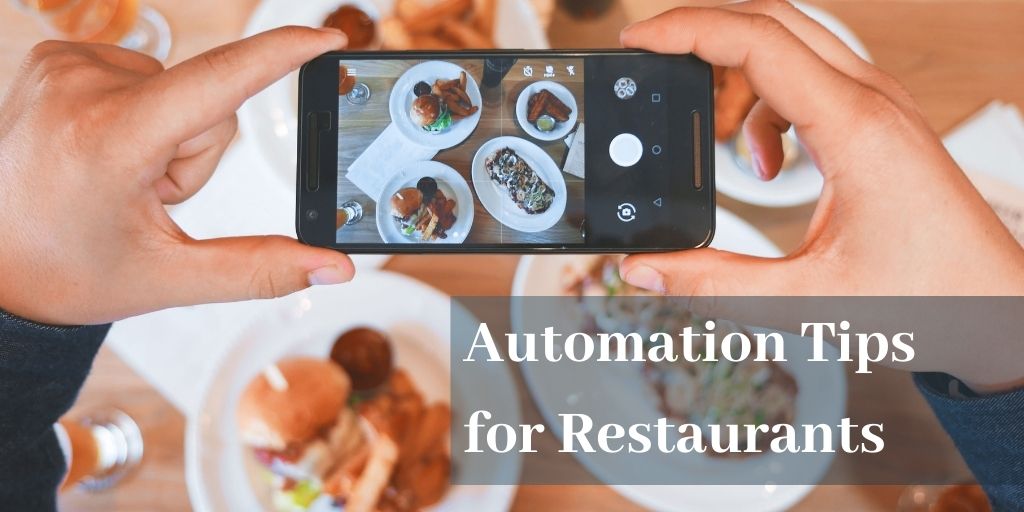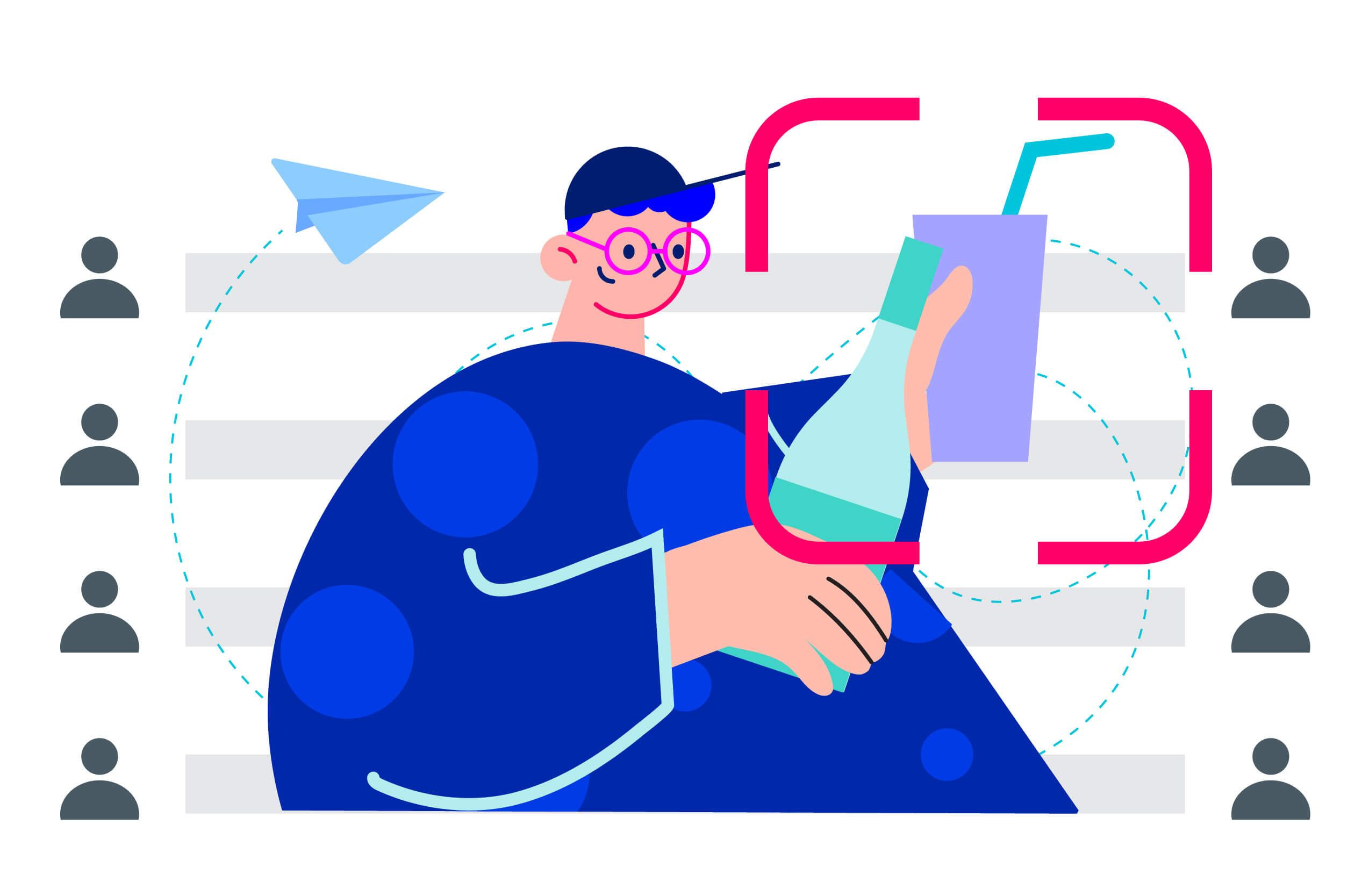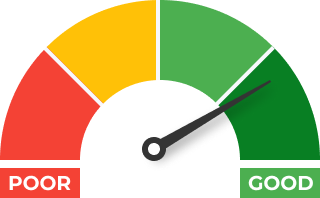With the current advancements in technology and increasing customer demands, restaurant managers are finding it easier and more profitable to automate key repetitive tasks.
By creating effective systems for most of the tedious, time-consuming tasks, both managers and employees in the hospitality business are able to focus on what matters most: quality service for their guests.
In this article, we’re going to explore the benefits of restaurant automation. We’re also going to look at 9 different ways to streamline and automate your operations, including self-service, mobile ordering, and video auditing.
Ready? Let’s go.
Advantages of restaurant automation
Here are some of the main reasons why restaurant automation can help your business:
- Enhanced customer experiences: Automation systems execute tasks within a fraction of the time it would normally take, often with zero mistakes. With automation, you can enhance client experiences through reduced wait times and accurate orders.
- Happier employees: Restaurant staff is often overworked, especially during rush hours. Things can get chaotic when you have many guests and not enough employees to handle the workload. Automation gives you easier work management by taking repetitive tasks from your employees’ plates so that they can focus on guests.
- Improve compliance: Tools like Glimpse integrate with your POS and use your video footage to flag sales that aren’t entered into your POS – automatically. This way, you can reduce the risk of employee theft and improve overall compliance in your restaurant.
- Increased profitability: Restaurant automation systems cut down order wait times, allowing you to serve more guests. They also help you manage your inventory accurately at a fraction of the cost it would take to pay people to do these tasks. This adds to your bottom line and increases your profitability.
9 ways to improve restaurant profitability through automation
Let’s look at how you can apply automation to enhance your restaurant’s profitability.
1. Automated table reservations
Keeping up with table reservations can get hectic if you have a busy restaurant. With phones constantly ringing, it’s easy for the front-of-house staff to double-book or get the reservation wrong altogether.
Mistakes happen, but a dissatisfied guest could turn into an unfavorable review for your restaurant. An automated table reservation system would streamline your booking process and eliminate the embarrassment of reservation mix-up.
2. Ordering kiosks
If you have a fast-food restaurant, ordering kiosks allow your customers to tap in their order, pay via credit card, and then pick up their order at the counter.
This seamless process from ordering to check-out allows you to serve more customers for a fraction of the time it would take an employee to take the order and charge the customer.
3. Self-service ordering at the table
Automating the ordering process saves a lot of time and reduces the chances of mixing up orders. With a self-service, automated ordering system, the waiter no longer has to take the order. This translates into less waiting time, faster table turnover, and more profits.
4. On the go mobile ordering
The current restrictions due to the Covid-19 pandemic have caused a massive demand for home deliveries. People are more reluctant to go to restaurants, opting instead to order in.
Ordering food via an app service has become a no-brainer, and it’s what most customers expect from restaurants. Grasp this opportunity and adopt an automated online ordering system that allows customers to order, pay automatically and choose between delivery or pick up.
5. Automated cooking process
Robotics have already been successfully implemented in other industries such as motor assembly, and it’s just a matter of time before they become the norm in the hospitality industry.
Robots are predictable, efficient, and hygienic. They are meant for repetitive, standardized tasks that don’t replace the human touch but rather produce consistency. Using an automated cooking process will also significantly reduce food contamination and eliminate food safety concerns.
Employees already consider many of the tasks they need to perform as monotonous, so using a robot won’t make them feel like they’re being replaced. Instead, it’ll make your employees’ jobs easier and safer and boost their morale.
6. Inventory software
Using a spreadsheet to manage your restaurant’s inventory may have been the old way of doing things, but it’s time-consuming and often overwhelming. With inventory management systems in place, you can avoid this headache, all while reducing waste.
Ingredients are expensive, and not staying on top of your inventory could cost you a lot. With automation in your inventory-taking process, you could manage your ingredients’ shelf life and set reminders to replenish your stock when items become unavailable or expire. If everything is logged in, it will be easier to pinpoint food theft and inconsistencies.
7. Video auditing tools
Hiring auditors for your books and CCTV footage can be expensive, and they are still prone to making mistakes or missing some details. Instead, consider looking into video auditing.
Video auditing uses computer vision to identify items served to your customers, then matches these to POS entries. If there’s a mismatch, the AI flags it so that you know the date and time it happened.
All you need to start video auditing are strategically-positioned cameras and a video auditing tool like Glimpse. Glimpse gives you detailed insights to help you identify losses, areas at risk, and compliant orders.
8. Accounting software
Accounting software helps you stay on top of your restaurant’s finances. An accounting and reporting software analyzes the numbers and sends you a report of your sales and transactions in an easy-to-understand graph. You can then analyze the numbers to get a clear understanding of your restaurant’s performance. This streamlines your communication with the accountant and eliminates the need for excel spreadsheets, making it easier for them to handle the accounts efficiently.
9. Automated deliveries
Restaurant automation isn’t limited to the restaurant setup. In this era of social distancing, restaurants are looking for pandemic-proof food delivery methods, and automated deliveries seem to be the most viable solution.
Autonomous delivery robots have been in testing for a couple of years now, and companies like Starship Technologies already have working prototypes. The Starship robot, for example, uses GPS systems and inbuilt cameras to navigate the streets and make deliveries autonomously.
Other companies are developing and testing long-range autonomous delivery drones that can fly a delivery to a customer’s address using GPS location. The delivery technology is still emerging and hasn’t been widely adopted, but Covid-19 has shown the potential and need for contactless food delivery.
Conclusion
Technological disruption in the hospitality industry was long overdue but is now moving fast, thanks to the Covid-19 crisis. There’s no way around it. The need to limit human contact has pushed most restaurants to adopt automated systems that help them run operations more efficiently and safely.
Restaurant automation has also proven to boost profitability by cutting down the time it takes to perform tasks efficiently. If you’re interested in improving your restaurant with the help of automation, Glimpse video auditing would be a great start. Click here to schedule a free demo.










 +1 (786) 292-2373
+1 (786) 292-2373 insights@glimpsecorp.com
insights@glimpsecorp.com





